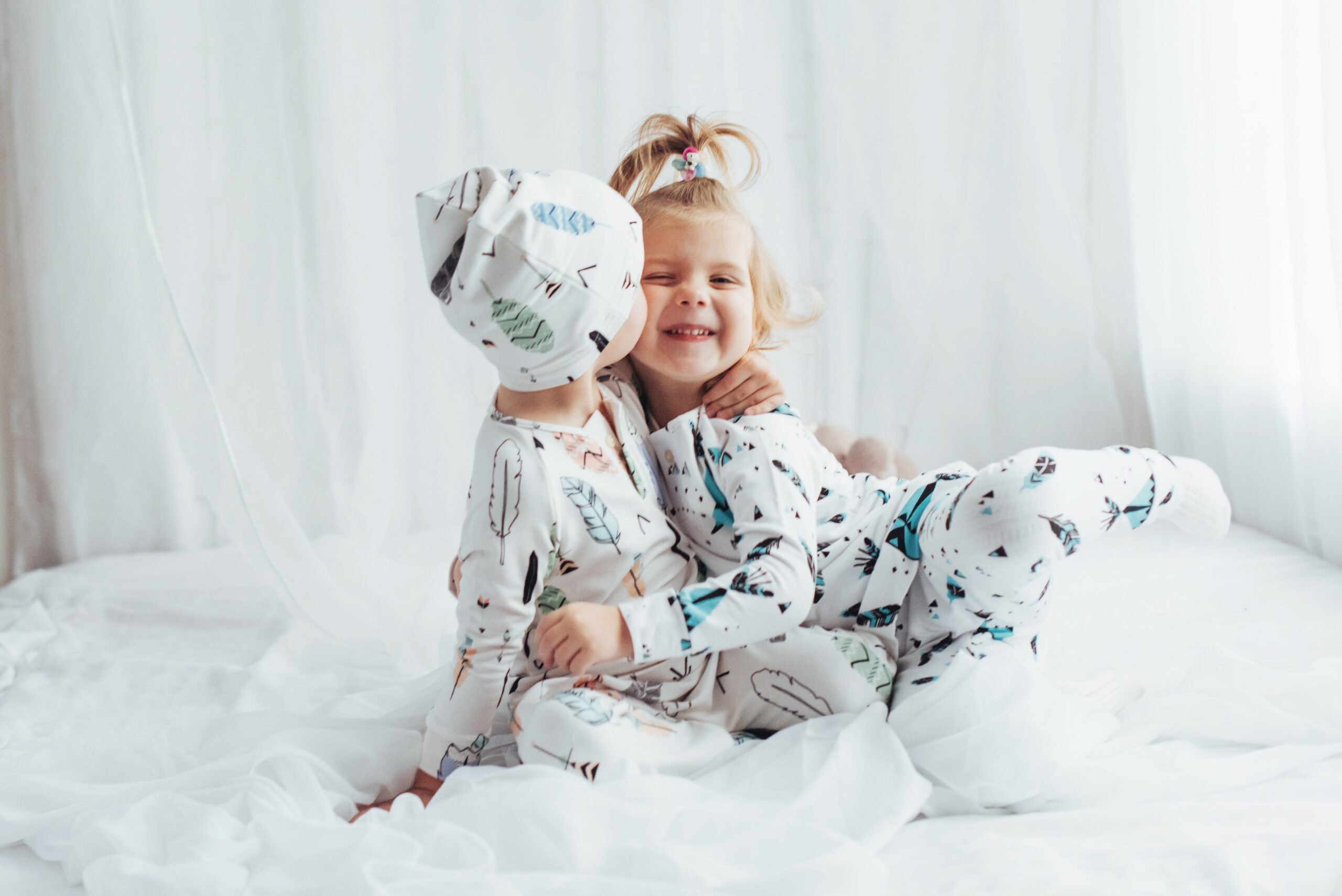One of the most crucial things to think about while making sure your baby has a good night’s sleep is how you dress your baby. Proper sleep clothing not only guarantees your baby stays comfortable all night but also helps control their body temperature and supports safe sleep. This is one of the difficult concerns for parents. Parenting is a slow and steady journey.
In this guide, we will delve into the best practices for dressing your baby for sleep, from selecting the right fabrics to understanding temperature guidelines. By the end of this article, you’ll have all the knowledge you need to make sleep time as safe and comfortable as possible for your little one.
Why It’s So Important to Dress Your Baby for Sleep
The sheer amount of recommendations and advice available to new parents about the care of their child could overwhelm them. Still, your baby’s sleeping attire might influence several important aspects.
Babies sleep a lot in their early months; hence, dressing them in a way that supports comfort and safety can assist in developing good sleeping patterns. Furthermore, a poorly dressed infant can soon get either too hot or too cold, which would influence their sleep quality.
Knowing the ideal fabrics, layering methods, and temperature ranges will help you to make sure your infant is suitably dressed for sleep, therefore lowering the danger of overheating or coldness.
Selecting Correct Fabric for Baby’s Sleepwear
Choosing the appropriate cloth is the first step in knowing how to outfit your baby for sleep. Babies’ skin is far more delicate than that of adults; hence, choosing soft, airy, and mild materials is absolutely vital. The correct fabric will help control your child’s body temperature and avoid discomfort, thereby ensuring your child remains comfortable all night long.
a-Cotton
It is soft, airy, and naturally hypoallergenic; cotton is among the best materials used in baby sleepwear. It lets air flow throughout the body, which helps your infant stay cool in a warm environment and cool in a colder one. Cotton is also quite resilient enough for regular use and is easy to wash.
b-Bamboo
Bamboo cloth dries quickly, it has become rather popular for baby sleepwear. Since it is inherently temperature-regulating, it is a great option for newborns who often overheat readily. Bamboo is also gentle on the skin, so it’s perfect for delicate skin types.
Merino wool
Though it’s not the first fabric you might consider for infant sleepwear, Merino wool is a great choice for winter months. It helps your infant stay warm without overheating, it is soft, airy, and naturally temperature-regulating. Additionally, moisture-absorbing Merino wool keeps your baby dry all night.
Avoid Synthetic Fibers
Polyester and other synthetic fabrics are overly priced, and this is not the best choice for your baby’s sleep dress. Usually trapping heat and moisture, these fabrics could cause discomfort and overheating. Synthetic textiles can also occasionally aggravate delicate skin.
The Significance of Layering for Baby’s Sleep
Dressing your infant for sleep also depends on knowing how to stack their clothes. Layering guarantees that your kid is neither too hot nor too cold and helps you adjust to fluctuating room conditions. Regarding layering, there are some crucial guidelines to keep in mind.
a-Wearable blankets and Sleep Sacks
Sleep sacks, also known as wearable blankets, are a popular option for dressing babies for sleep. These are essentially blanket-like garments that your baby wears over their pajamas. They come in various weights to suit different temperatures, and many are designed with a zipper or snap closure for easy use.
For infants still learning to roll over or move about in their crib, a sleep sack is very useful. Unlike loose blankets, which may suffocate your infant, a sleep sack keeps your baby warm and comfortable and stays securely on her all night.
b-Pajamas and Footed Nightwear
Another fantastic choice for dressing newborns for sleep is footed sleepers. Usually including a zipper or snaps for simple diaper changes. Because they keep your baby’s feet warm, footed sleepers are great for cooler temperatures. Made from soft cotton or fleece, many footed sleepers ensure that your baby is cozy.
You might choose a lighter one-piece pajama or perhaps a short-sleeve onesie for hotter temperatures. Without a hefty blanket, layering your baby’s pajamas with a sleep sack or wearable blanket gives extra warmth.
Sheets and Blankets
Remember that loose blankets should be avoided while dressing your baby for sleep, particularly for young children under twelve months old. Sleep sacks are a safer substitute since these blankets could cause suffocating problems. If you decide to have blankets for an older child, be sure they are securely tucked into the bed and cannot be readily moved.
Regarding bedding, use light, airy materials that will help control the body temperature of your infant. A fantastic choice are cotton sheets; choosing a fitting sheet guarantees that it will remain firmly in place even as your baby moves about.
Temperature Recommendations for Baby Sleepwear
Knowing the temperature of the room where your baby sleeps also helps you determine how to dress them for sleep. Babies are very sensitive to temperature variations, so it’s crucial to strike a balance between warmth and coolness to avoid overheating or being too cold. Following the correct advice is essential, as overheating is linked to a higher risk of sudden infant death syndrome (SIDS).
Babies’ optimal room temperature is between 68°F and 72°F (20°C and 22°C). Your baby might overheat from excessively warm room temperature, which would cause discomfort and raise SIDS risk. Conversely, if the environment is too cold, your infant can feel too cold and find it more difficult to go asleep soundly.
Further Advice on Baby Sleep Safety
Apart from learning how to outfit your infant for sleep, some crucial safety issues should be taken into account:
a- To lower the risk of SIDS, always place your infant down to sleep on their back.
b-Always avoid loose bedding. Never leave stuffed animals, comforters, or pillows in the crib with your infant.
c-Make sure the crib mattress your infant uses is firm and clear of soft material.
Final Thoughts
More than just style, dressing your kid for sleep is about comfort, safety, and encouraging good sleeping patterns. Understanding how to outfit your infant for sleep depending on fabric selections, layering tactics, and temperature rules will help you to guarantee that the sleeping conditions are ideal. The correct sleepwear—a toasty sleep sack, a cozy footed sleeper, or breathable cotton pajamas—may make all the difference in the quality of sleep your infant gets.
Remember, dress your kid for a secure, comfortable, and peaceful night, not only for sleep. Following the advice in this blog will help you to make sure your infant sleeps peacefully tonight.














